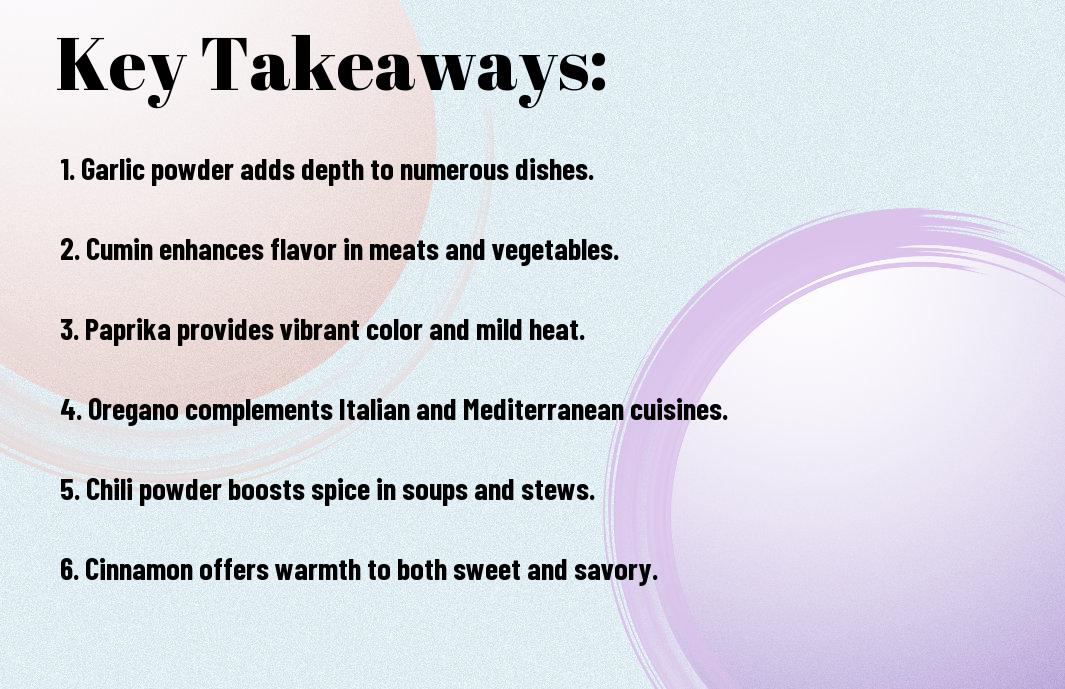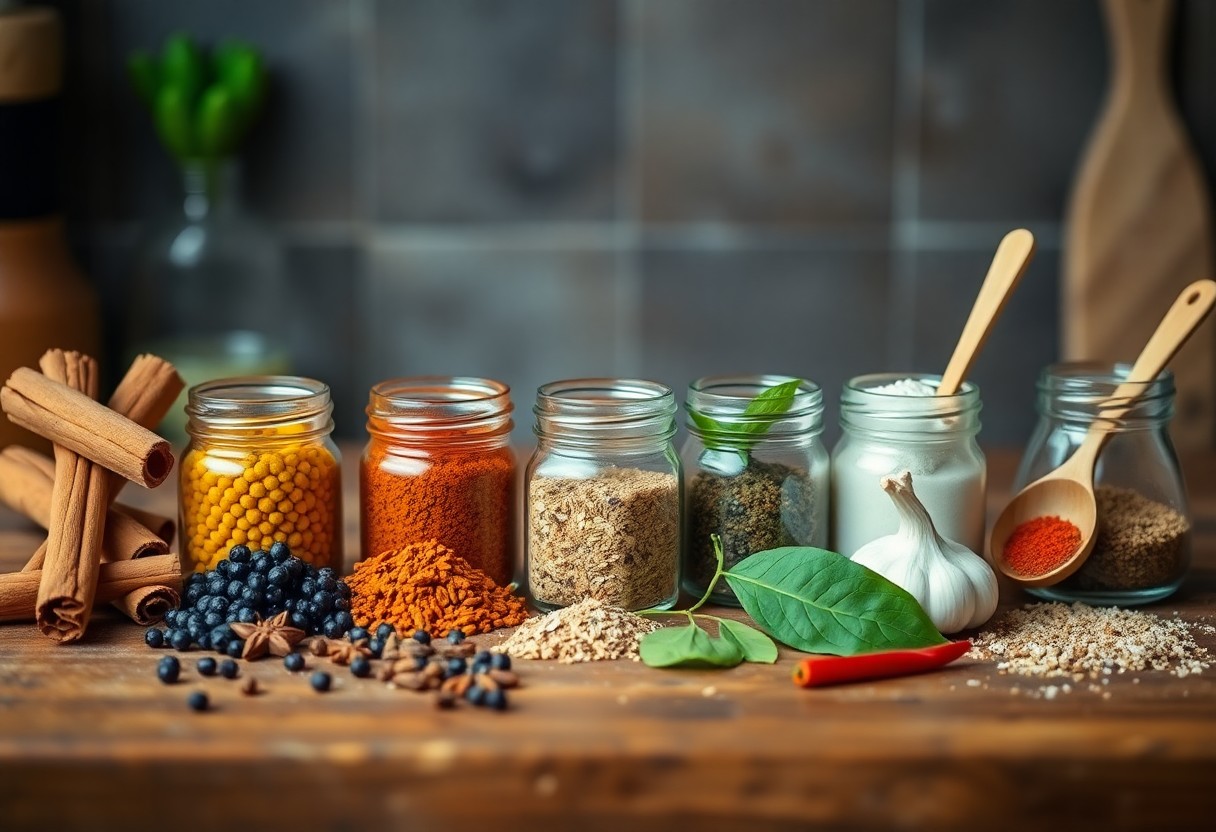Many of you may be wondering about the concept behind the “Fat Burning Kitchen”. This informative post will research into the principles and ideas behind this popular program, shedding light on how it can help you achieve your weight loss and health goals. By the end of this article, you will have a clear understanding of what makes the “Fat Burning Kitchen” so effective and how it can benefit you on your journey to a healthier lifestyle.
Key Takeaways:
- Focus on whole, natural foods: The concept behind “Fat Burning Kitchen” is centered around the idea of consuming whole, natural foods that promote fat burning and overall health.
- Avoid processed foods: The program highlights the importance of avoiding processed foods that are high in unhealthy fats, sugars, and artificial ingredients that can hinder fat loss.
- Emphasize nutrient-dense options: The emphasis is on choosing nutrient-dense foods that provide crucial vitamins, minerals, and antioxidants to support fat burning and optimal wellness.

The Origins of Fat Burning Kitchen
For those curious about the origins of the popular program, “Fat Burning Kitchen,” it’s crucial to investigate into the background of the concept and the minds behind its creation. The journey begins with the inception of the program and the motivations that led to its development.
The Creator’s Story
One of the key figures behind the creation of “Fat Burning Kitchen” is a renowned nutritionist and fitness expert who struggled with weight management for years before discovering the science behind fat burning foods. Through years of research and personal experimentation, the creator developed a comprehensive program aimed at helping individuals achieve their weight loss goals through dietary adjustments and lifestyle changes.
The Inspiration Behind the Concept
Creators of “Fat Burning Kitchen” drew inspiration from the growing awareness around the impact of food choices on overall health and well-being. Realizing the need for a practical and sustainable approach to weight loss, they set out to create a program that not only focused on shedding excess pounds but also prioritized long-term health benefits and improved energy levels.
The concept was born out of a deep understanding of the body’s metabolism and the role that different foods play in either facilitating or hindering the fat-burning process. By combining scientific research with practical advice, the creators aimed to empower individuals to make informed decisions about their diets and transform their bodies from the inside out.
The Science Behind Fat Burning
Some people may wonder how exactly the Fat Burning Kitchen program helps you shed those extra pounds. Understanding the science behind fat burning is crucial for your weight loss journey.
How Metabolism Works
Burning fat is all about boosting your metabolism. Metabolism refers to the processes in your body that convert food and drink into energy. The faster your metabolism, the more calories your body burns, even at rest. Fat Burning Kitchen provides you with foods that can rev up your metabolism and help you burn fat more efficiently.
The Role of Macronutrients
Behind fat burning is the quality of macronutrients you consume. Macronutrients, including carbohydrates, proteins, and fats, play a significant role in weight management. Foods recommended in the Fat Burning Kitchen are chosen for their ability to keep you feeling full, regulate blood sugar levels, and optimize fat burning.
With the right balance of macronutrients, you can fuel your body effectively and support your weight loss goals. The Fat Burning Kitchen guides you on choosing the best sources of macronutrients to promote fat burning and overall health.
The Importance of Hormonal Balance
Any successful fat burning program considers the importance of hormonal balance. Hormones play a crucial role in regulating metabolism, hunger, and fat storage. By making smart food choices and following the guidance of the Fat Burning Kitchen, you can help keep your hormones in check and facilitate fat loss.
Works mentioned in the Fat Burning Kitchen program are designed to support healthy hormonal balance, making it easier for you to lose weight and maintain a healthy body composition.

Debunking Common Myths
The Truth About Low-Fat Diets
Now, let’s unravel the myth surrounding low-fat diets. Many people believe that consuming low-fat foods is the key to weight loss. However, the truth is that not all fats are created equal. Your body needs healthy fats to function optimally, and cutting out all fats from your diet can actually be detrimental to your weight loss goals. Instead of opting for low-fat options, focus on incorporating good fats like avocados, nuts, and olive oil into your meals.
The Myth of Counting Calories
With the myth of counting calories, many individuals obsess over meticulously tracking their caloric intake in hopes of shedding pounds. However, the reality is that not all calories are the same. Your body processes calories from different sources differently. Instead of fixating on calorie counting, pay attention to the quality of the foods you consume. Choose nutrient-dense foods that will nourish your body and support your metabolism.
Debunking the myth that all calories are equal is crucial to understanding how your body processes food. By focusing on the nutritional value of what you eat rather than just the number of calories, you can make more informed decisions about your diet and ultimately support your weight loss journey.
Why Exercise Alone Won’t Cut It
Myth: Many people believe that they can out-exercise a bad diet. While exercise is important for overall health and can aid in weight loss, it is not a standalone solution for shedding excess fat. Simply hitting the gym without paying attention to your diet will not yield the desired results. Your nutrition plays a significant role in determining your body composition, and combining a healthy diet with regular exercise is the key to successful weight loss.
A balanced approach that incorporates both proper nutrition and regular physical activity is crucial for achieving sustainable weight loss. By understanding the importance of nutrition and exercise working together, you can create a holistic plan that supports your fat-burning goals and overall well-being.
The Fat Burning Kitchen Philosophy
Many diet plans focus on restricting calories or avoiding entire food groups, but the philosophy behind The Fat Burning Kitchen is different. It revolves around the idea of eating real, whole foods that nourish your body and promote fat loss. By focusing on the quality of the foods you eat rather than just the quantity, you can support your metabolism and overall health.
Focus on Whole Foods
An important aspect of The Fat Burning Kitchen philosophy is the emphasis on whole foods. These are foods in their natural state, such as fruits, vegetables, lean proteins, whole grains, and healthy fats. By choosing whole foods over processed options, you can provide your body with important nutrients and support weight loss.
Eliminating Inflammatory Foods
Foods that cause inflammation in the body can hinder your weight loss efforts and contribute to various health issues. The Fat Burning Kitchen encourages you to eliminate these inflammatory foods, such as refined sugars, trans fats, and processed vegetable oils. By cutting out these culprits and focusing on whole, nutrient-dense foods, you can create an environment in your body that is conducive to burning fat.
To further support fat loss and overall health, The Fat Burning Kitchen program recommends eliminating or minimizing foods that cause inflammation in the body. These include processed foods, refined sugars, trans fats, and artificial additives. By making these changes to your diet, you can reduce inflammation, support your metabolism, and promote fat burning.
The Power of Nutrient-Dense Eating
To truly optimize your health and weight loss goals, The Fat Burning Kitchen emphasizes the power of nutrient-dense eating. This means choosing foods that are rich in important vitamins, minerals, and antioxidants to fuel your body and promote fat loss. By focusing on nutrient-dense foods like leafy greens, colorful fruits, lean proteins, and healthy fats, you can ensure that you are providing your body with the nourishment it needs to thrive.
An important aspect of The Fat Burning Kitchen philosophy is the focus on nutrient-dense eating. This involves choosing foods that are not only low in calories but also rich in important nutrients like vitamins, minerals, and antioxidants. By prioritizing nutrient-dense foods in your diet, you can support your overall health, boost your energy levels, and promote fat loss.
Key Principles for Fat Burning
To understand the key principles for fat burning, you should explore into THE FAT BURNING KITCHEN Your 24-Hour Diet … and learn how balancing blood sugar plays a crucial role in your body’s fat-burning mechanism.
Balancing Blood Sugar
Any fluctuations in blood sugar levels can hinder your body’s ability to burn fat effectively. By consuming complex carbohydrates, healthy fats, and lean proteins in each meal, you can maintain stable blood sugar levels throughout the day, leading to optimal fat burning. Additionally, avoiding sugary foods and refined carbohydrates can prevent spikes in blood sugar, promoting a sustained energy level and efficient fat metabolism.
Managing Insulin Resistance
One important aspect of fat burning is managing insulin resistance. Insulin, a hormone produced by the pancreas, plays a key role in regulating blood sugar levels. If your body becomes resistant to insulin, it can lead to increased fat storage and difficulty in burning stored fat. By incorporating foods rich in fiber, antioxidants, and healthy fats into your diet, you can improve insulin sensitivity and enhance your body’s fat-burning capabilities.
A holistic approach to fat burning includes optimizing digestion, as it directly impacts your body’s ability to absorb nutrients and burn fat efficiently.
Optimizing Digestion
On your journey to fat burning, optimizing digestion is crucial for maximizing nutrient absorption and promoting a healthy gut environment. Consuming probiotic-rich foods, such as yogurt and kimchi, can support a balanced gut microbiota, which plays a significant role in metabolism and fat regulation. Fiber-rich foods like fruits, vegetables, and whole grains aid in digestion and help maintain a healthy weight.
For instance, incorporating digestive enzymes and apple cider vinegar into your meals can aid in breaking down nutrients and improving digestion, ultimately enhancing your body’s fat-burning potential.

Putting it into Practice
Not sure how to put the concepts from The Fat Burning Kitchen into action? Here are some practical tips to help you incorporate fat-burning principles into your daily routine.
Meal Planning Strategies
Practice meal planning to ensure you have healthy options readily available. Set aside time each week to plan your meals and snacks, taking into account your nutritional needs and goals. This will help you make better choices and avoid unhealthy options when hunger strikes.
Grocery Shopping Tips
To make healthy eating easier, start by creating a shopping list based on your meal plan. Stick to the perimeter of the grocery store where fresh produce, lean proteins, and whole grains are typically located. Avoid the center aisles where processed foods loaded with sugar and unhealthy fats tempt you. Knowing what to buy and where to find it can make a big difference in your shopping experience.
- Organize your list by sections of the store to streamline your shopping trip.
- Focus on whole foods and ingredients, rather than packaged and processed items.
- Knowing how to read nutrition labels can help you make informed choices.
Simple Swaps for a Healthier Kitchen
To improve the healthfulness of your kitchen, start by replacing unhealthy ingredients with healthier alternatives. Swap out vegetable oils for coconut oil or olive oil, white rice for brown rice or quinoa, and sugary snacks for fresh fruit or nuts. Putting these simple swaps into practice can help transform your kitchen into a fat-burning powerhouse.
Conclusion
Upon reflecting on the concept behind “Fat Burning Kitchen,” you have gained valuable insights into the importance of nutrition and food choices for promoting fat loss and overall health. By understanding which foods to avoid and which to incorporate into your diet, you can make informed decisions that support your weight loss goals.
Keep in mind, the key takeaway from “Fat Burning Kitchen” is that by making small changes to your eating habits and focusing on whole, unprocessed foods, you can optimize your body’s fat-burning potential and improve your overall well-being. It’s about embracing a sustainable lifestyle that nourishes your body and helps you achieve long-term success in your weight loss journey.
FAQ
Q: What is the concept behind “Fat Burning Kitchen”?
A: The concept behind “Fat Burning Kitchen” is to provide valuable information on foods that can help boost metabolism, burn fat, and promote weight loss. It focuses on the idea of using whole, natural foods to transform your kitchen into a fat-burning powerhouse.
Q: How does the “Fat Burning Kitchen” approach differ from other diets or programs?
A: Unlike many fad diets or programs that focus solely on calorie restriction or specific food groups, the “Fat Burning Kitchen” approach emphasizes the importance of incorporating nutrient-dense foods that support fat loss and overall health. It also educates individuals on how certain foods can optimize metabolism and promote fat burning.
Q: What are some key takeaways from the “Fat Burning Kitchen” concept?
A: Some key takeaways from the “Fat Burning Kitchen” concept include learning about the impact of processed foods on metabolism, understanding the benefits of incorporating lean proteins and healthy fats, and discovering how certain spices and herbs can aid in fat loss. It also highlights the importance of reading food labels and making informed choices when grocery shopping.
















